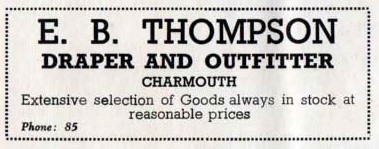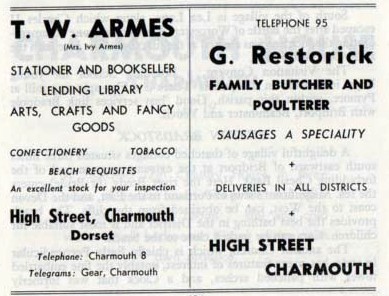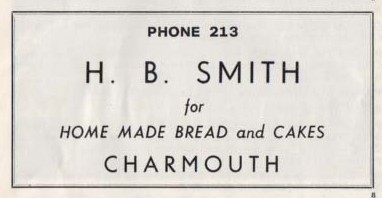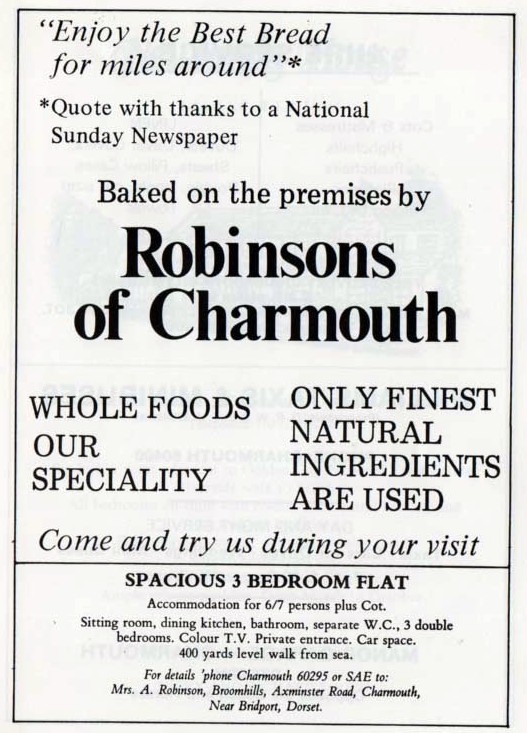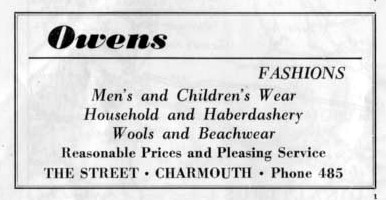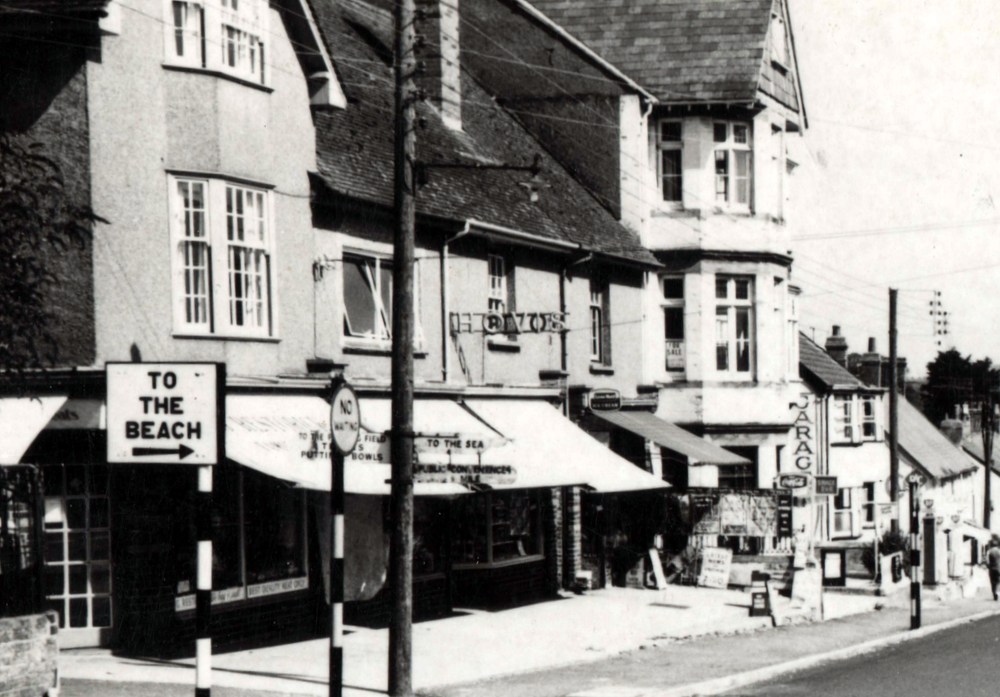Use Search engine below to fine more pages.
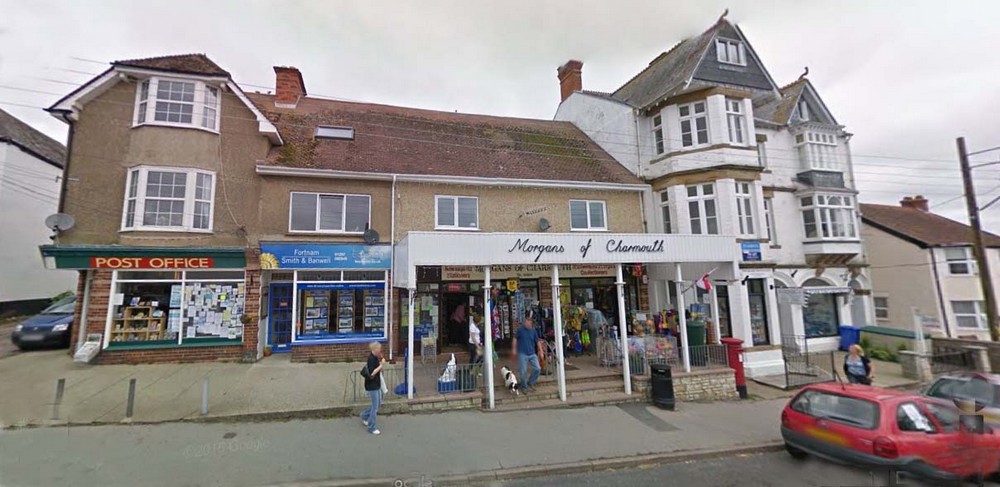
In 1895 Charmouth suffered its most disastrous fire. It began in a thatched roof and by the end of the day, three large houses were completely destroyed. They formed a group and it was only the gaps between them and their neighbours that prevented it spreading further. Since then The Post Office, Estate agents, Newsagents, Hairdressers, Butchers and Lansdowne House that we know today have replaced them. Fortunately, a few photographs and maps have come down to us which help tell the story of what they looked like before the fire.
In 1290 the Abbott of Forde created a Borough here and each house would have half acre of land stretching back on their Burgage plots. The north wall parallel to The Street still survives and some of the plots can still be recognised although many were amalgamated into larger more viable units. Barr`s Lane would have originally been a main route into the interior. The half-acre plot adjoining it where it met the Street had survived into the 19th century and can be seen on the 1841 Tithe Map as no. 48. The other two buildings stood on plots of approximately 1 acre, which would have been two plots originally. I have broken the group up into three: the first is the block which now houses the Post Office, Estate Agents, Newsagents. The second is "Devon edge" and the third "Lansdowne House". I will deal with the Arcade in this article and save the story of the others for the next issue of Shoreline.
The first building from Barr’s Lane was commonly called "Streets" after an earlier owner and is now known as “The Arcade”. Even in 1933 when it came up for auction it was still referred to as this. It does help with tracing it back. For they were an important family with the parish records showing Stephen being born to John and Grace Street in 1675. Later in 1697, Thomas Street is buried here and his will has survived. It is interesting to see that Sarah Street married Samuel Cornelius in 1706 and they owned a large property where Charmouth Stores (Nisa) is today. Later in 1754 the Streets appears in the Poor Rates for the village when they are shown renting their property from Richard Henvill, the Lord of the Manor. Richard, a Bristol Merchant had inherited most of Charmouth from his uncle Anthony Ellesdon, who had lived in the Manor all of his long life and has an impressive marble memorial in St. Andrews Church today.
The next tenant, Robert Sumption, is described later in his life as a Baker. The earliest record we have for Robert and his wife Susannah is when their son Henry is baptised at the Church in 1763. By 1783 he is shown in the Land Tax list as leasing his House and Orchard from Francis Phipps Henvill. In the same year a list of houses and fields in the village describe it as “Braggs” and is valued at £3-10-0 with a garden and orchard of 1 rood 38 perches, almost 1/2 acre, which equates to the original burgage plot set by the Abbot of Forde in 1290. On the death of Henvill, a large part of the village was sold off to Lieutenant James Warden who was later to die in a Duel. But this property and a number of others were bought by the village Curate, Brian Coombe, who continued to lease it to Robert Sumption. The land tax lists show that Robert was renting a number of fields in the village and may well have farmed these. Robert and Susannah`s son, Henry married Eleonore Cox, who also lived in the village in 1782. But just two years later his father was to die and his son Henry sold his business to John Diment, who had moved to the village from Whitchurch Canonicorum. Benjamin Diment, whose relationship I have still to discover was a Blacksmith who also moved to the village shortly afterwards and built what is Waterloo House today. In 1785, John is shown in the parish records to marry Prudence Bowdidge from Wootton Fitzpaine and are later blessed with a daughter, Frances. Two of their original insurance policies for 1789 and 1793 have survived and show that his house and bakery was thatched and made of stone and insured for £100 and he was leasing it from the Rev. Brian Coombe. Johns time there was short and he died in 1803 and his wife, Prudence just two years later. This could be the end of the story of the building being a Bakers, but their daughter, Frances was to marry William Coles in 1807 and they continued in the same trade. Her brother, Henry works alongside her husband and appears in the tax lists of the time as a Baker. The Coles and their descendants were to live and trade in Charmouth for the next 100 years. They were to have 4 children - Mary, John, Frances and William. Tragically William senior died in 1816, aged just 34, and his wife is shown as carrying on their business. The 1830 Pigots Directory shows her and her brother, Henry Diment as Bakers. But her life was to be caught short when Just two years later she was to die aged just 45, when cholera swept through the area. James Welsh and Captain George Smith also died as a result and all three were buried in the cholera mound by the church tower. It was her son John, aged just 20 who was then to take on the family business.
On the death of the Rev. Brain Coombes in 1818, the freehold of the building and its grounds was purchased by Sir Richard and Lady Ann Spencer. Ann was the granddaughter of Lieutenant James Warden. They lived for a while in Lyme Regis, but in 1833 with their nine children left these shores for a new life in Australia, where her husband was Governor at Albany. Sadly, he was to spend only 6 years there before his death in 1839. She continued to live with her children there until her own death in 1855. The house they built is now a museum run by the Australian National Trust.
On the death of his mother, John Coles gave up the lease on the building he was renting from the Spencers and moved to the adjoining property, which is now the site of Devon Edge. The Coles were to be successful bakers there and in time bought its freehold.
The new tenant of “Streets” after the departure of John Coles was to be Digory Gordge. The 1841 Census shows him there, aged 55 with his wife, Martha and their 6 children. His son, William is a tailor and no doubt ran his business from the single storey workshop abutting on to Barr’s Lane, which is shown in the maps and early photos. Digory was the Parish Clerk for 56 years. He saw the village increase in size year by year until the church was not large enough to hold the congregation and was rebuilt. His other duties beside being Clerk were constant attendants at Church and its cleaning. He originally lived in a cottage at the top of Lyme Hill on a plot shared with his brothers. He sold his plot to Tobit Gear on 1839 for £13 and moved into Streets as a result. He was Clerk during the building of new church and he died on 27th April 1861 at the age of 76 and his grave stone can be seen today at St. Andrews. On his death his son, William, aged 45, continued to live and work as a Tailor there with his wife, Mary and their 4 children.
In 1862 the Trustees of Lady Spencer’s Estate auctioned the property and the advert of the time makes for interesting reading. It is described as" a pleasantly situated and roomy Freehold dwelling house, formerly called “Streets” with an excellent large garden and orchard thereto belonging, situate opposite Lower Sea Lane, in the fashionable watering place of the village of Charmouth, containing together about 1 acre, now in the occupation of the Executor of Mr. Digory Gordge, as tenant from year to year, at the yearly rent of £17”.
The successful bidders were the Pryer’s who lived nearby at Stanley House and ran a Masons Yard directly opposite on a field known as Pear Close. They were also builders and rebuilt Prospect Place, after a fire in 1862 as well as The Cement Works, which is now The Heritage Centre and other houses in the village. At the bottom of the “Streets” garden where it abutted the ancient north wall they built two houses, which they called Pryer’s Villas, which was later renamed “Lanes End”. The Gordges continued to live and work there until 1881 when the census for that year shows William Barnes, described as a Baker, no doubt unpopular with Frank Coles who was in the same business next door. I cannot find a record of the property on the next Census in 1891. But there is a strange story involving Sherlock Holmes, author- Conan Doyle visiting it on a Ghost Hunt. The Charmouth historian, Reginald Pavey refers to Barnes and a chap called Cornick, living there in 1894. He writes:
“Cornick was a heavy drinker and said his house was haunted. Harry Stamp told me that furniture was moved about in the night and that no servants would stay owing to the unaccustomed noises. Cornick must have been well to do as he kept a servant and gardener. Harry's cousin Rose was one of the girls, and his grandfather was gardener, who dug up the kitchen floor and found underneath the skeleton of a baby. No one knew how long it had been there. Sir A.Conan Doyle came down to investigate in the early 1894 and said he would return. In the meantime the cottages were burnt down in the same year. Harry Stamp remembered the fire. It occurred on a Sunday afternoon, he and other boys were leaning against the railings learning their collects for Sunday School. By the time he and the other boys came out from Sunday School, the house was well alight, with men forcing to bucket chain to the nearest tap. The site remained vacant except for a row of macrocarpa trees which Pryer planted and which remained until 1931 after Pryer's death and four shops were built”.
The other two plots were quickly rebuilt as Sunnyside (Devon Edge) and Lansdowne House. It was only on his death in 1931 that it finally went up for auction the following year. Clifford Stapleforth paid £370 for the lot. It was described as " a piece of garden land, with stabling, &x., known as " Streets Tenement" having frontage of about 65 feet to the Main Street". The Stapleforths owned the Queens Armes at the time and bought the field known as Pear Close at the same auction for £250 and developed it into shops and houses.
The next person to come on to the scene in connection with the site was Ernest Thompson who submitted plans for four shops. We are fortunate that the original detailed drawings have survived at the Archives in Dorchester. They show frontages that have been altered over time, but outward looking virtually the same. Ernest was to take the corner building for himself and opened it in 1934 as a Drapers which he ran with his wife Ethel. Andrew Dunn took the next one for a Jewellers. Harold Smith ran his Bakery from the next shop and placed a large gold Hovis sign above his door, which can be seen in the old postcards. They had their cake and bake house in Barr's Lane, which is still in use today. Finally, George Restorick from Axminster who had a butchers by the Grange garden, opposite the George, took the forth unit. All four business were to prosper. Thompson was to be there into the 1950s, Smiths and Restorick into the 1960s. With Ron Dampier and the help of Directories of the time we have attempted to fathom out the confusing change of trading over the years. It would seem that when Smiths the bakers briefly moved their bakery into the corner shop, Childs opened a Hardware business in their unit. Morgans took on Restoricks shop and later extended into Childs shops, which is why today they still carry a large DIY stock at the back. Smith’s Bakery were only briefly in the corner shop, before Robinsons took over. They in turn were taken over by the Post Office, which had earlier been at Longs at the top of the Street, then in Devon Edge, before ending up where they are now on the corner. When Dunns finished it was a Ladies fashion shop called Owens for a time, before becoming an Estate Agents which is today trading as Fortnam, Smith and Banwell.
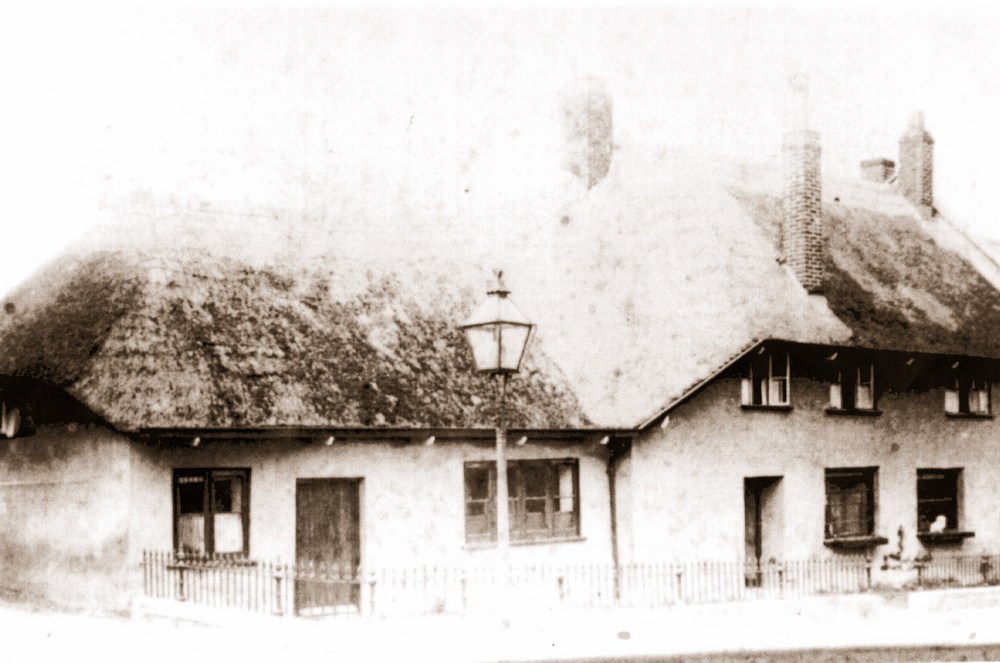
On Sunday afternoon, about three o'clock, smoke was observed issuing from the thatched roof of an uninhabited house belonging to Mr. Pryer, builder. An alarm was at once raised, but the fire had got such a firm hold of the roof that it was found impossible to save it. Efforts were directed to save the adjoining house of Mr. Coles, baker, which was also thatched, but in spite of the exertions of a ready band of helpers, the fire obtained the mastery of the house. A considerable quantity of Mr. Coles furniture and stock was saved and stored in the School Room, which fortunately available, as the school holidays are now on. An uninhabited house, adjoin Mr. Coles, next caught fire, and there was great fear that an adjacent block of thatched cottages would be involved in the conflagration. By pulling down the walls of the house next Mr. Coles the progress of the flames was checked, but the three houses were completely burnt out. Mr. Prayers house and that of Mr. Coles were insured, but we are sorry to say, wholly inadequate to cover the loss incurred by the fire. The third house belonging to Major General Hales was uninsured. Much sympathy is felt for the suffered, and especially for Mr. Coles, whose business will receive a considerable check thro the disaster. Mr Pryer had unify gone to London the proceeding day, and was from home when the property was destroyed. The original of the fire is unknown.

-002.jpg)

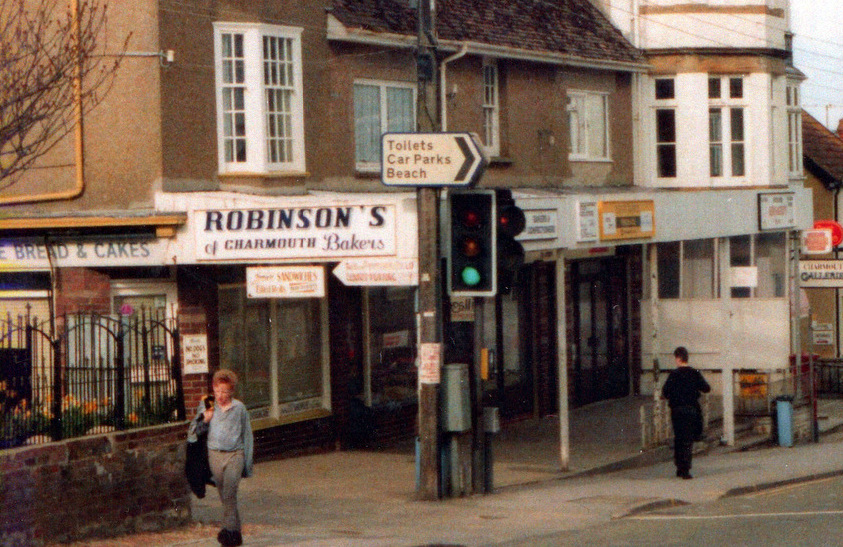
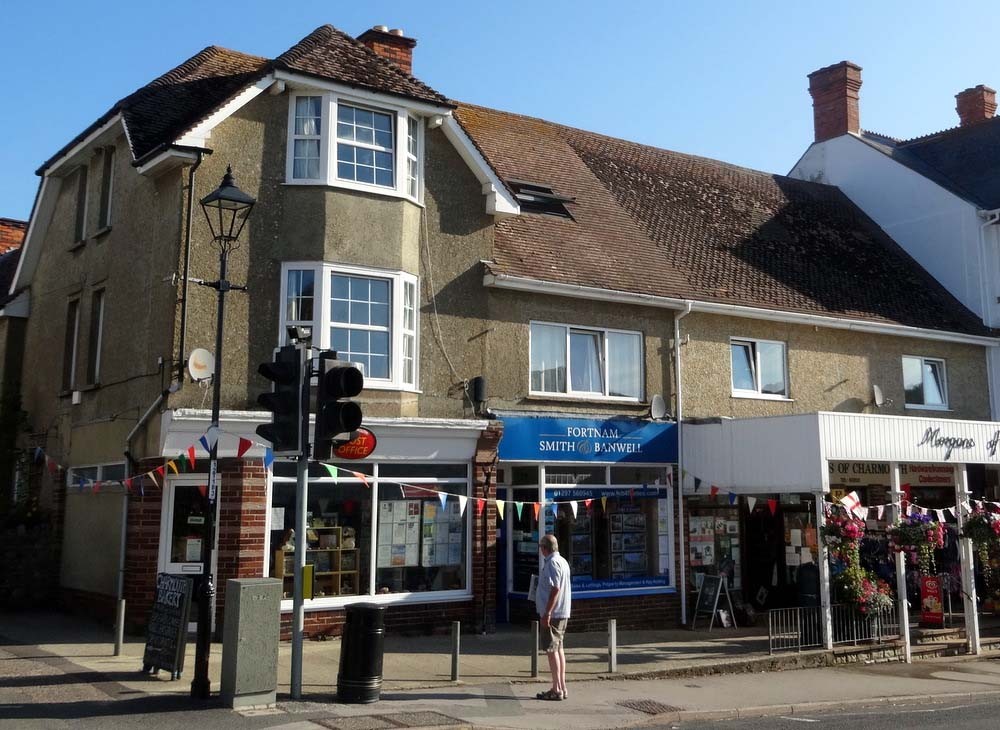
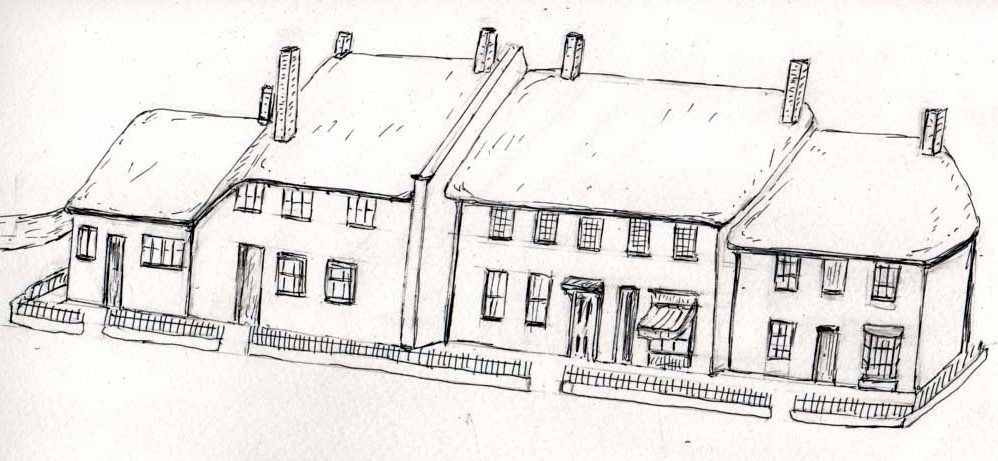

In the foreground is Pear Close, the site of Harry Pryer`s Stone Masons Yard.
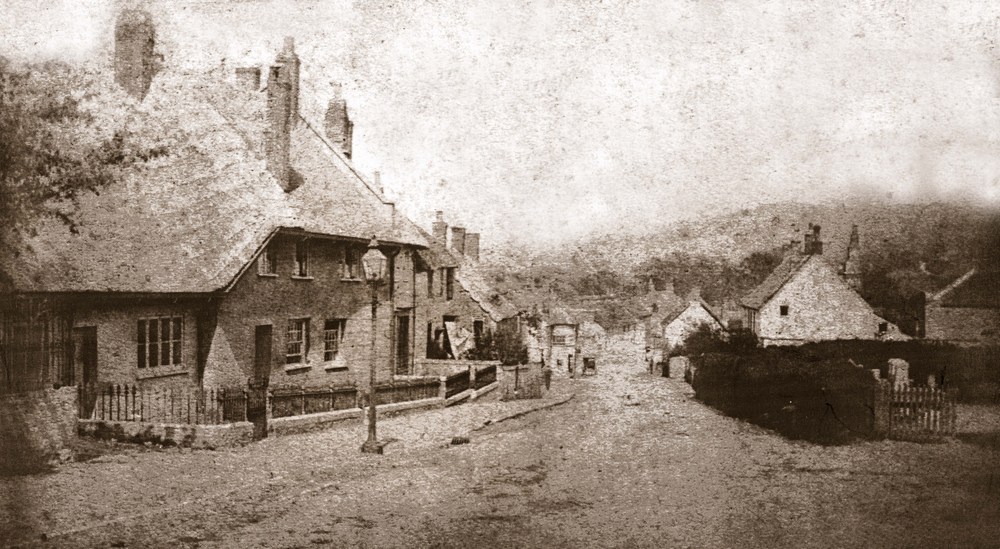
Notice how low the builind that formed part of "Streets" is and was used as a shop.
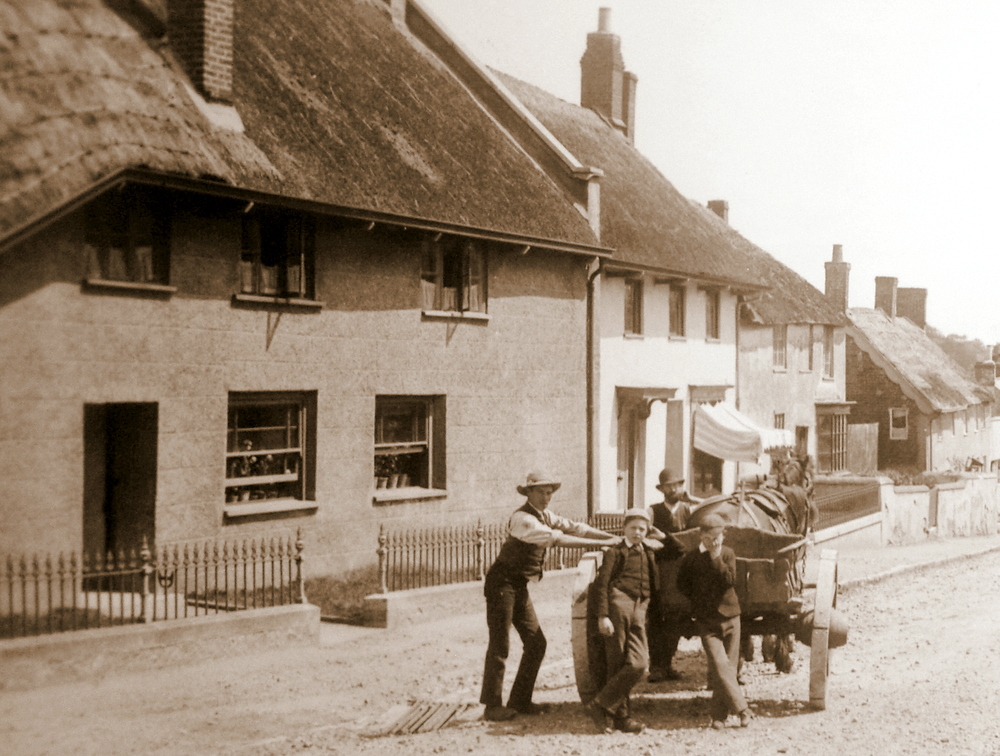
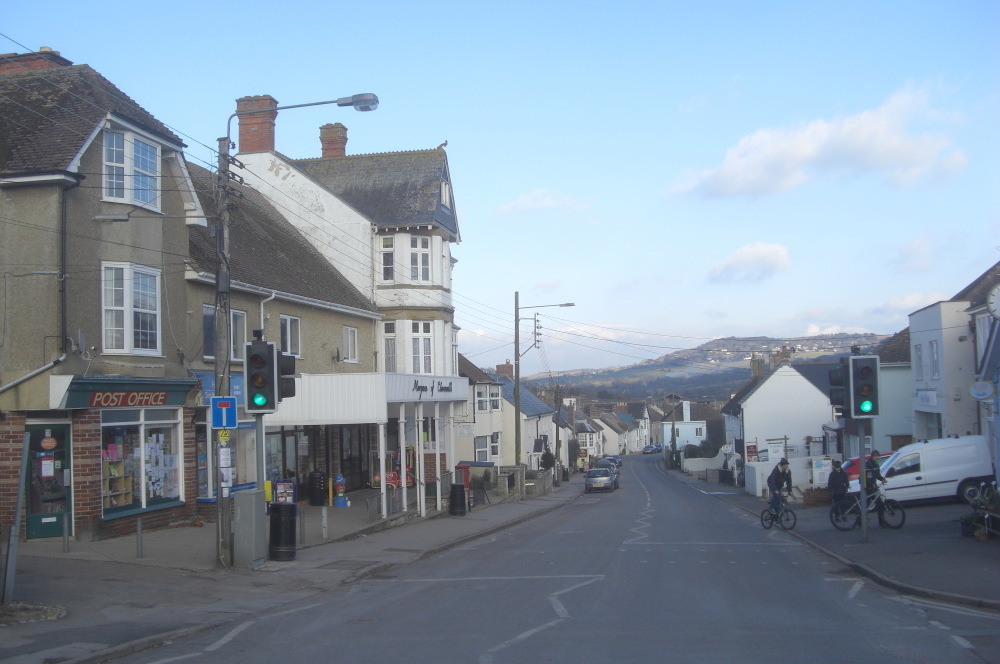

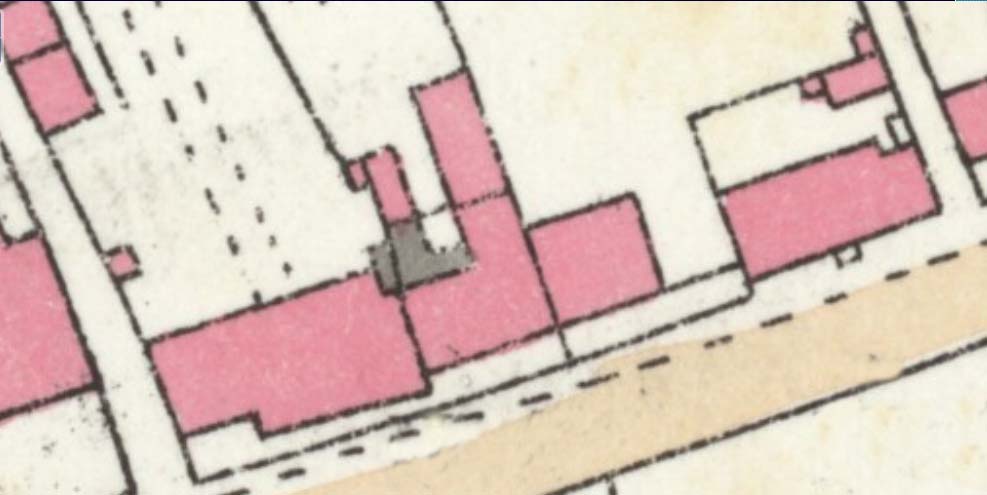



.jpg)


.jpg)

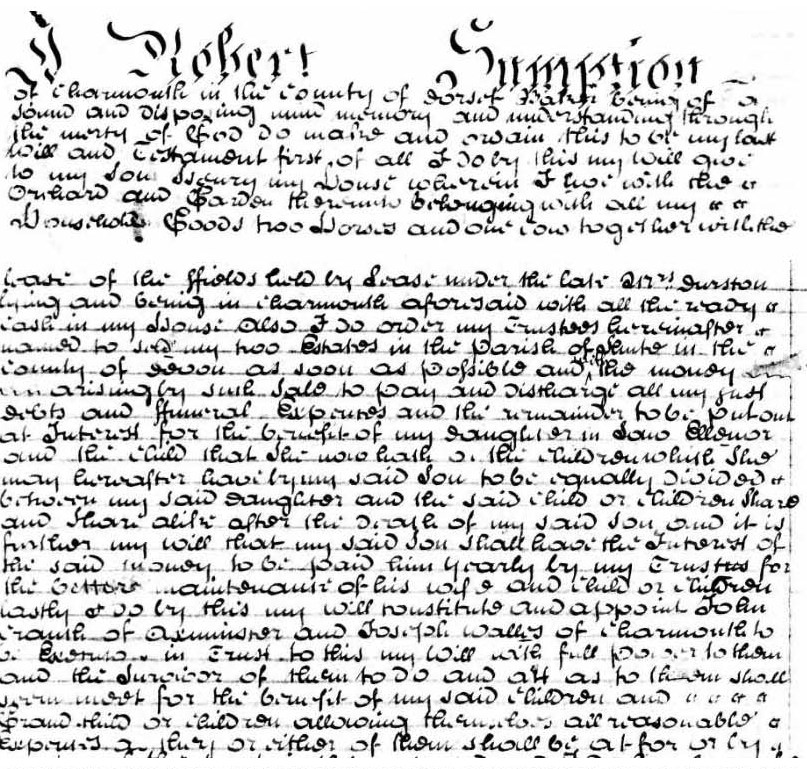
Will of Robert Sumption 1784
I Robert Sumption of Charmouth in the County of Dorset, Baker being of sound and disposing mind memory and understanding through the unity of God so make and ordain this to be my last will and testament first of all do by this my Will give to my son Henry my house wherein I live with the Orchard and Garden thereunto belonging with all my Household Goods, two horses and one cow together with the fields held by lease under the late Mrs. Durston lying and being in Charmouth aforesaid with all the ready cash in my house. Also I do order my trustees hereinafter to sell my two Estates in the Parish of Shute in the county of Devon as soon as possible and with the money to pay and discharge all my just debts and funeral expenses and the remainder to be put out by Trustees for the benefit of my daughter in law, Eleonore and the child that she now hath or the children which she may have hereafter have.To my said son to be equally divided between the said daughter and the said child or children. Shared and shared alike after the death of my said so. .....


.jpg)

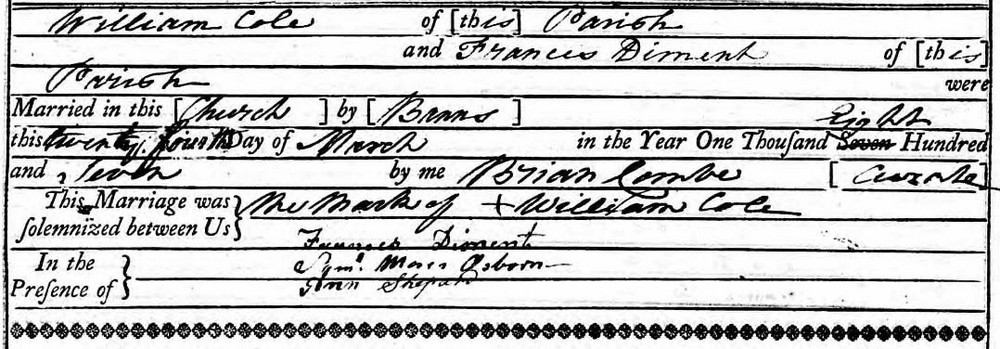
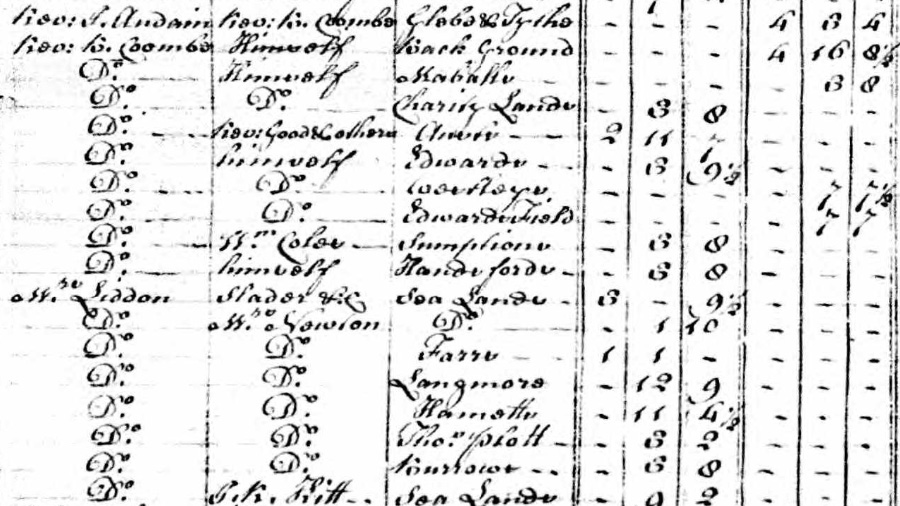

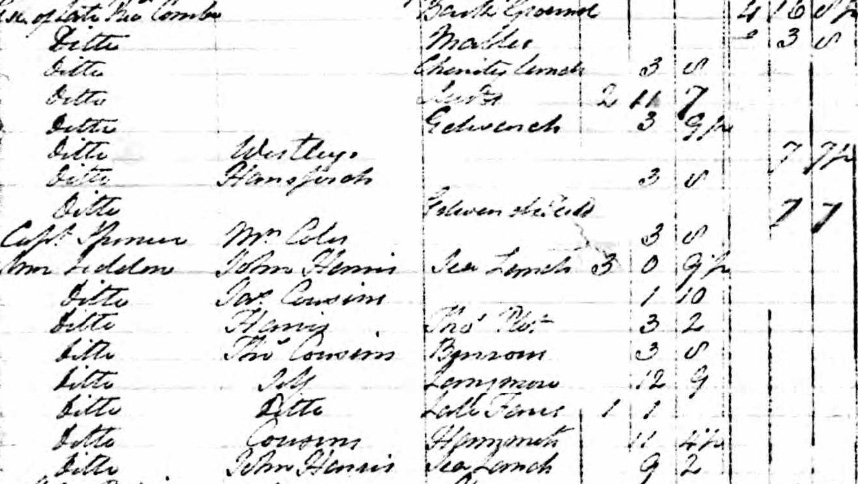



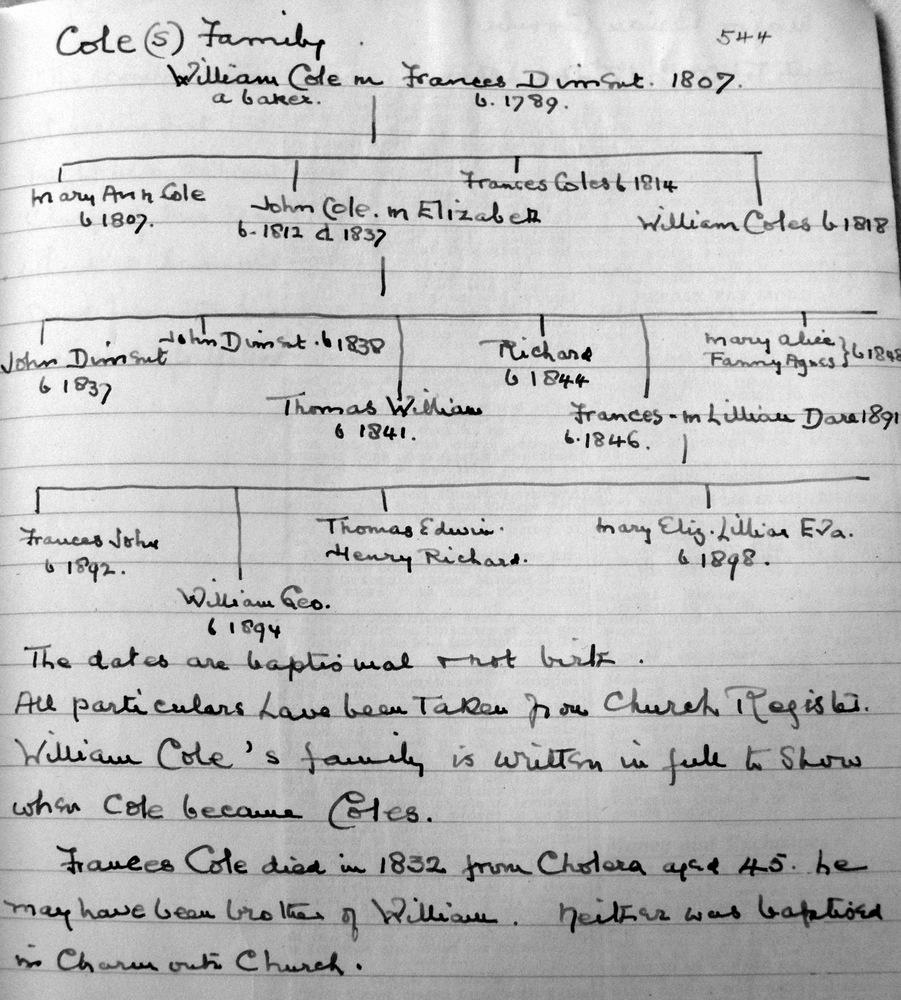
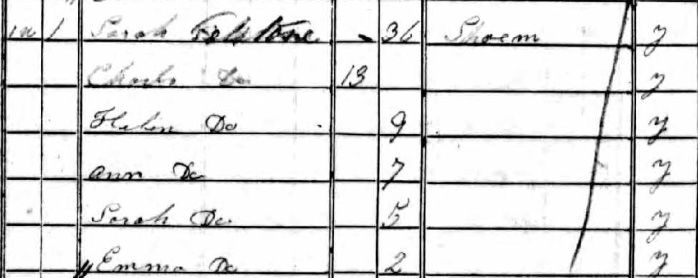
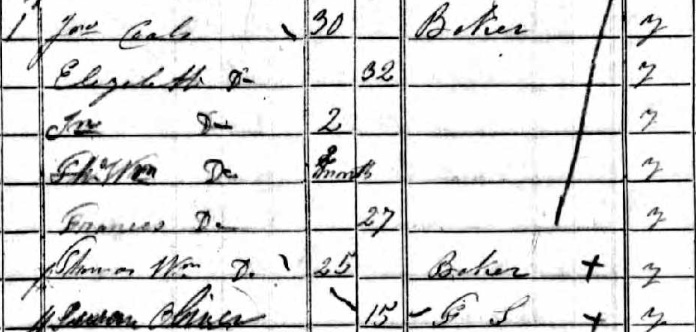
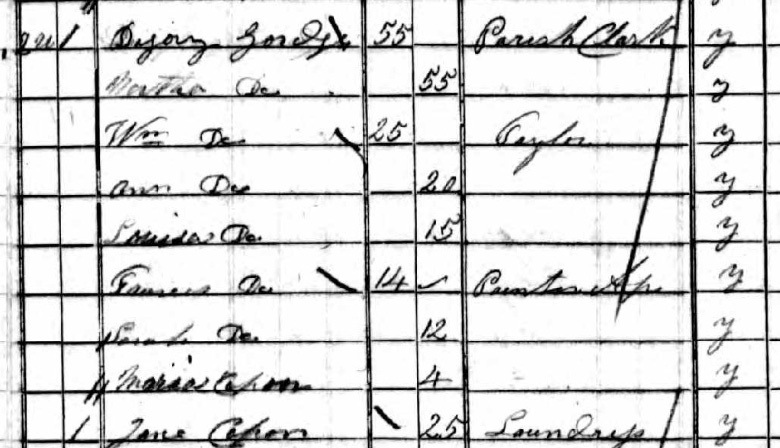

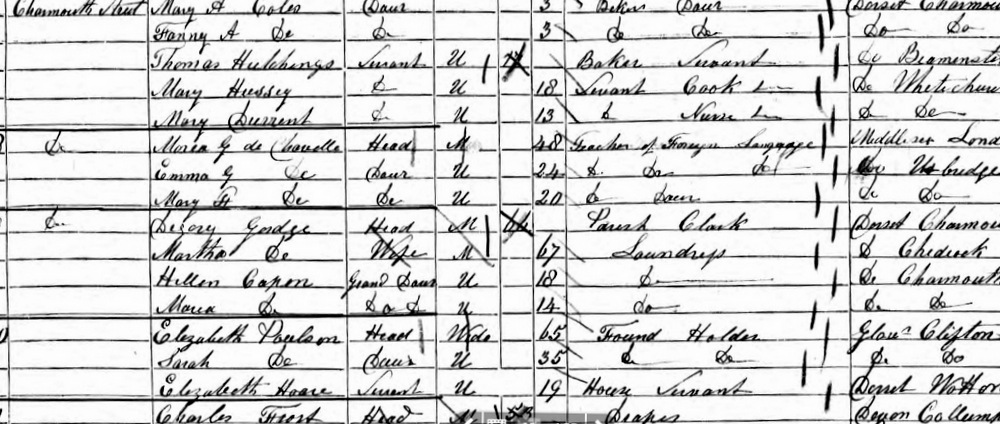

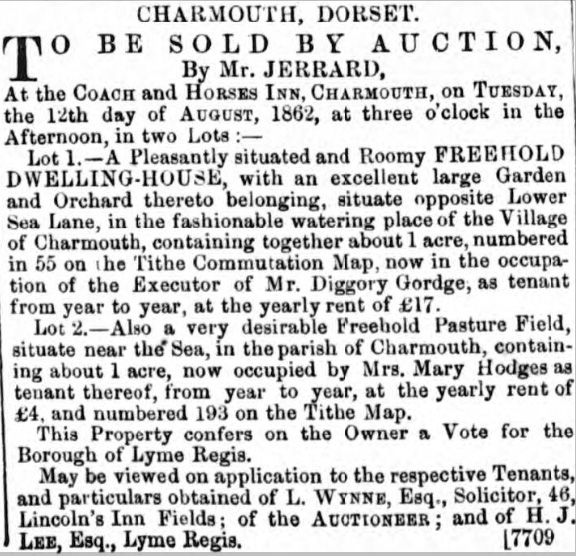
Lot1 a pleasantly situated and room freehold dwelling house formerly called Streets Tenement with an excellent large garden and orchard thereto belonging situate opposite Lower Sea Lane in the fashionable Watering Place of the village of Charmouth containg together 1 acre numbered 55 on the Tithe Map. Now in the occupation of Mr. Digory Gordge as tenant from year to year at the yearly rent of £17
Lot2 a very desirable Freehold Pasture field formerly called Single Common situate near the Sea in the Parish of Charmouth containing about 1 acre now occupied by Mrs Mary Hodges as Tenant thereof from year to year at the yearly rent of £4 numbered 193 on the Tithe Map. The Title commenced with a settlement dated 29th August 1812 with the marriage of the Late Sir Richard Spencer and Lady Spencer




The men began their investigation by checking the house for any sign of fraud and took other precautions that would prevent any trickery as they waited for the paranormal activity to manifest. On the first night, nothing at all occurred. On the second night, however, "a fearsome noise broke out," as Doyle described it. "It was like someone whacking a table with a heavy stick. The door of the sitting room was open and the noise reverberated down the passage." The men raced to find the cause of the noise, but none could be found, nor could any sign of hoaxing.
Doyle writes an interesting coda to this story. About a year after the investigation, the house burned down and an old skeleton of a child of about ten was found buried in the garden. Doyle wondered if this child, cut down too early in its life, was the cause of the haunting.
Doyle wrote that he did not submit a report about this investigation to the Society, but that the sceptic Podmore did - a report that irked Doyle. In his report, Podmore blamed the "unexplained" noises as a hoax perpetrated by the young man who lived in the house. This was nonsense, according to Doyle, because the young man "was actually sitting with us in the parlour when the trouble began. Therefore, the explanation given by Podmore was absolutely impossible.” June 1894



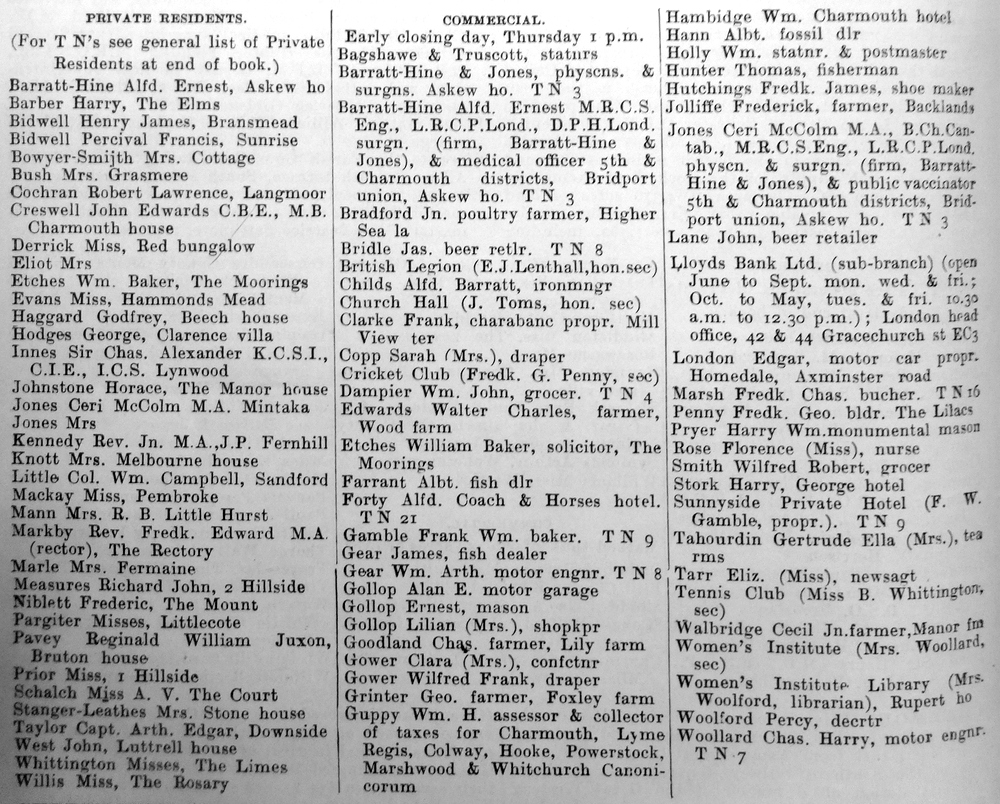








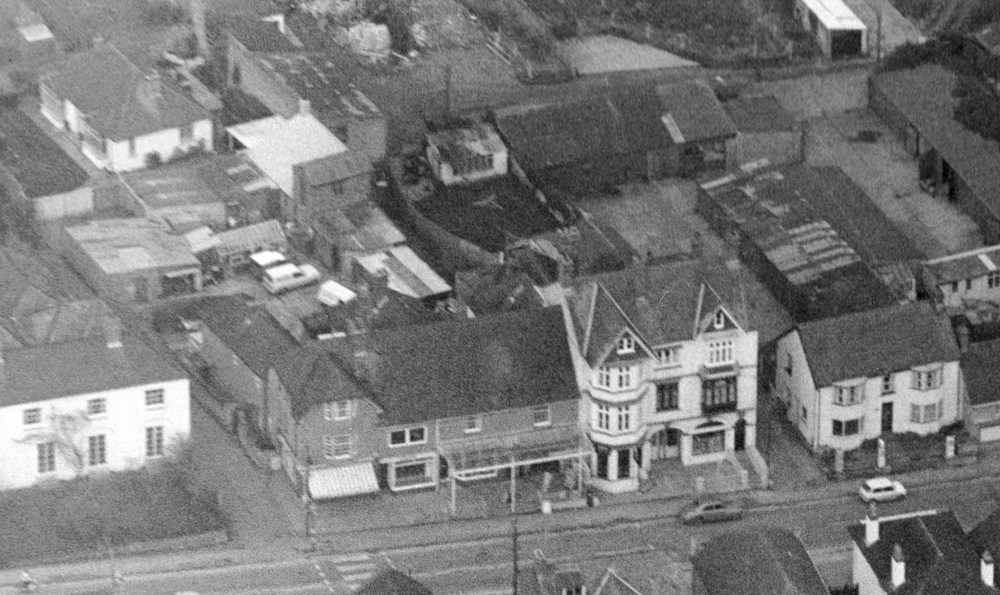
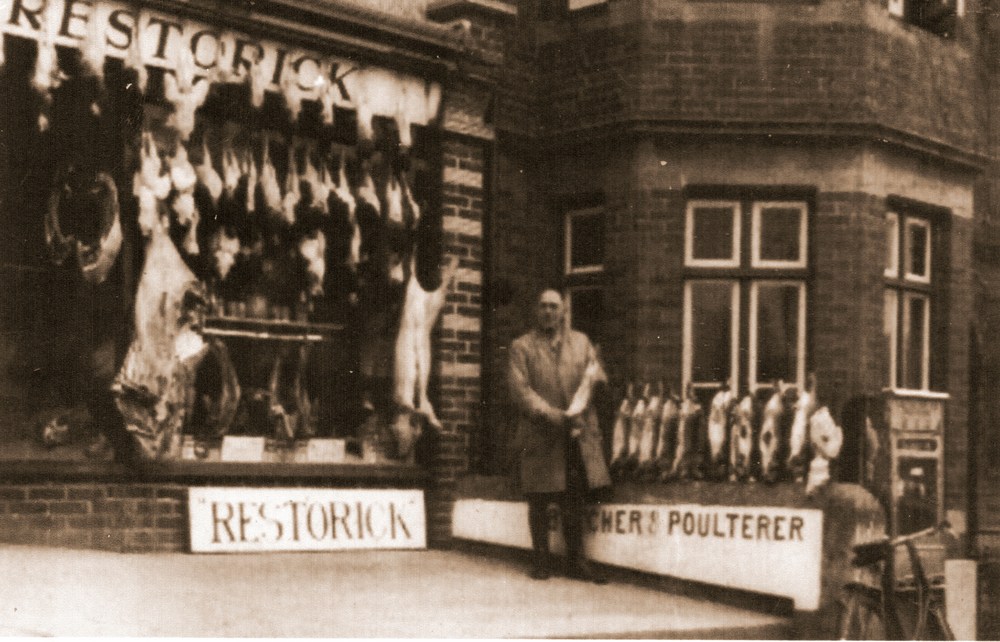
.jpg)

